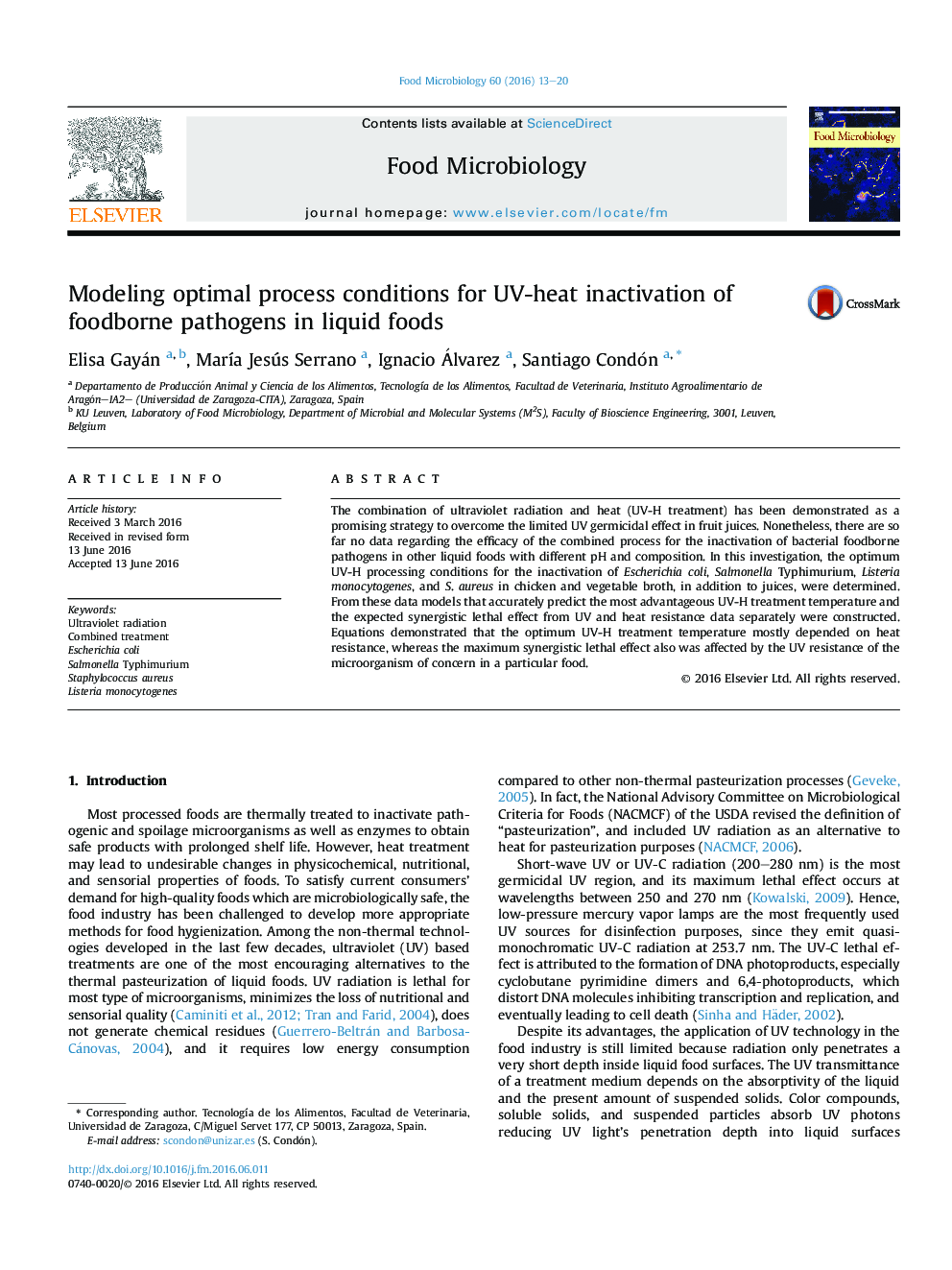| Article ID | Journal | Published Year | Pages | File Type |
|---|---|---|---|---|
| 6288337 | Food Microbiology | 2016 | 8 Pages |
Abstract
The combination of ultraviolet radiation and heat (UV-H treatment) has been demonstrated as a promising strategy to overcome the limited UV germicidal effect in fruit juices. Nonetheless, there are so far no data regarding the efficacy of the combined process for the inactivation of bacterial foodborne pathogens in other liquid foods with different pH and composition. In this investigation, the optimum UV-H processing conditions for the inactivation of Escherichia coli, Salmonella Typhimurium, Listeria monocytogenes, and S. aureus in chicken and vegetable broth, in addition to juices, were determined. From these data models that accurately predict the most advantageous UV-H treatment temperature and the expected synergistic lethal effect from UV and heat resistance data separately were constructed. Equations demonstrated that the optimum UV-H treatment temperature mostly depended on heat resistance, whereas the maximum synergistic lethal effect also was affected by the UV resistance of the microorganism of concern in a particular food.
Keywords
Related Topics
Life Sciences
Agricultural and Biological Sciences
Food Science
Authors
Elisa Gayán, MarÃa Jesús Serrano, Ignacio Álvarez, Santiago Condón,
